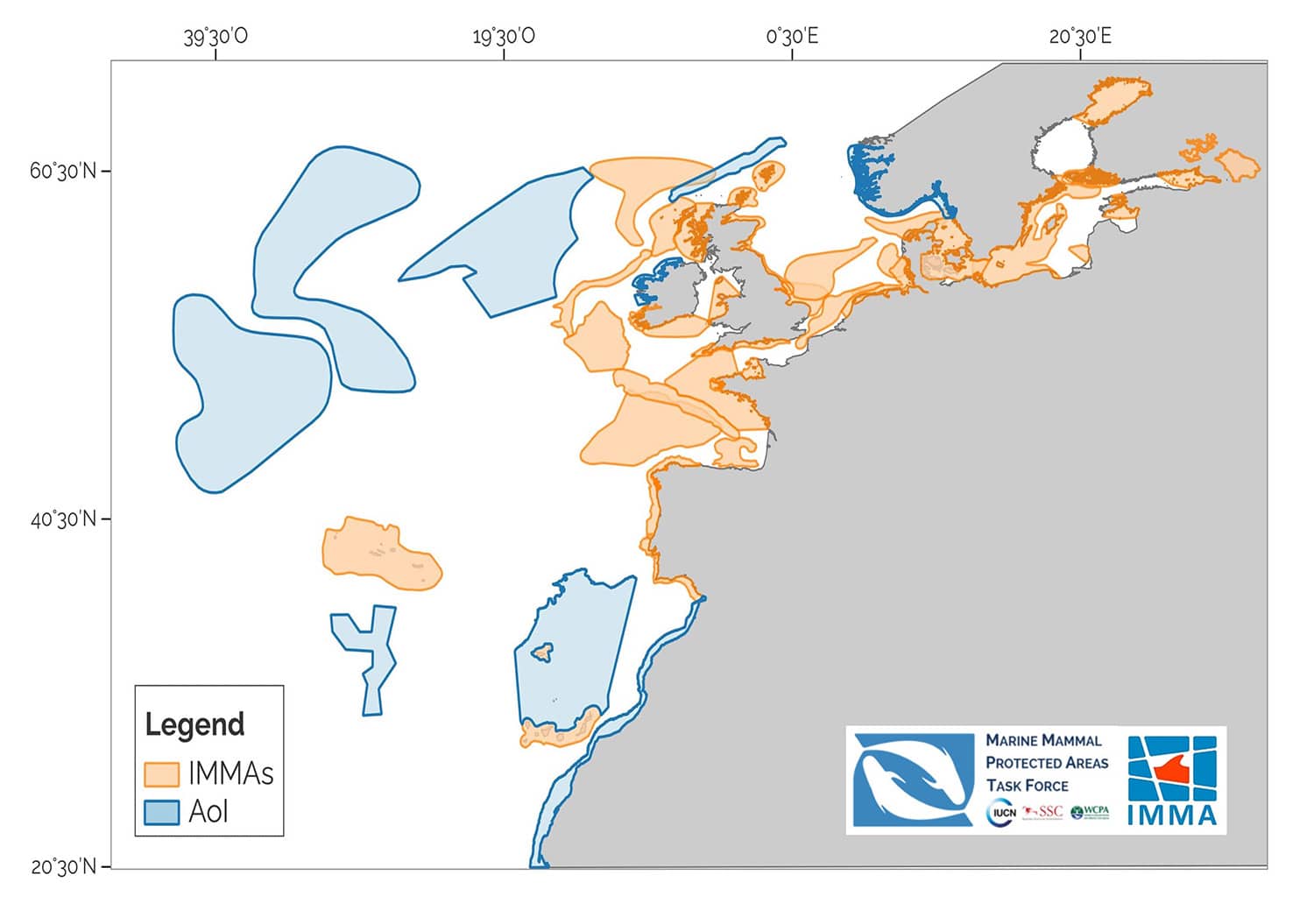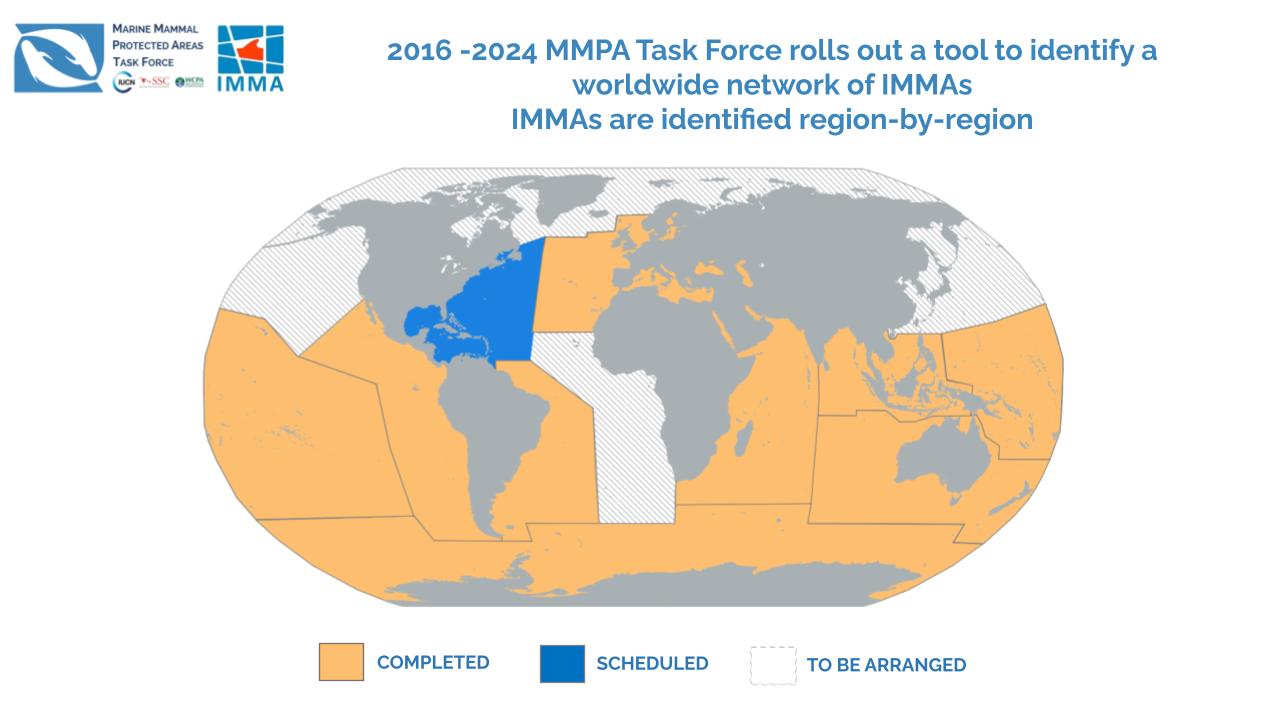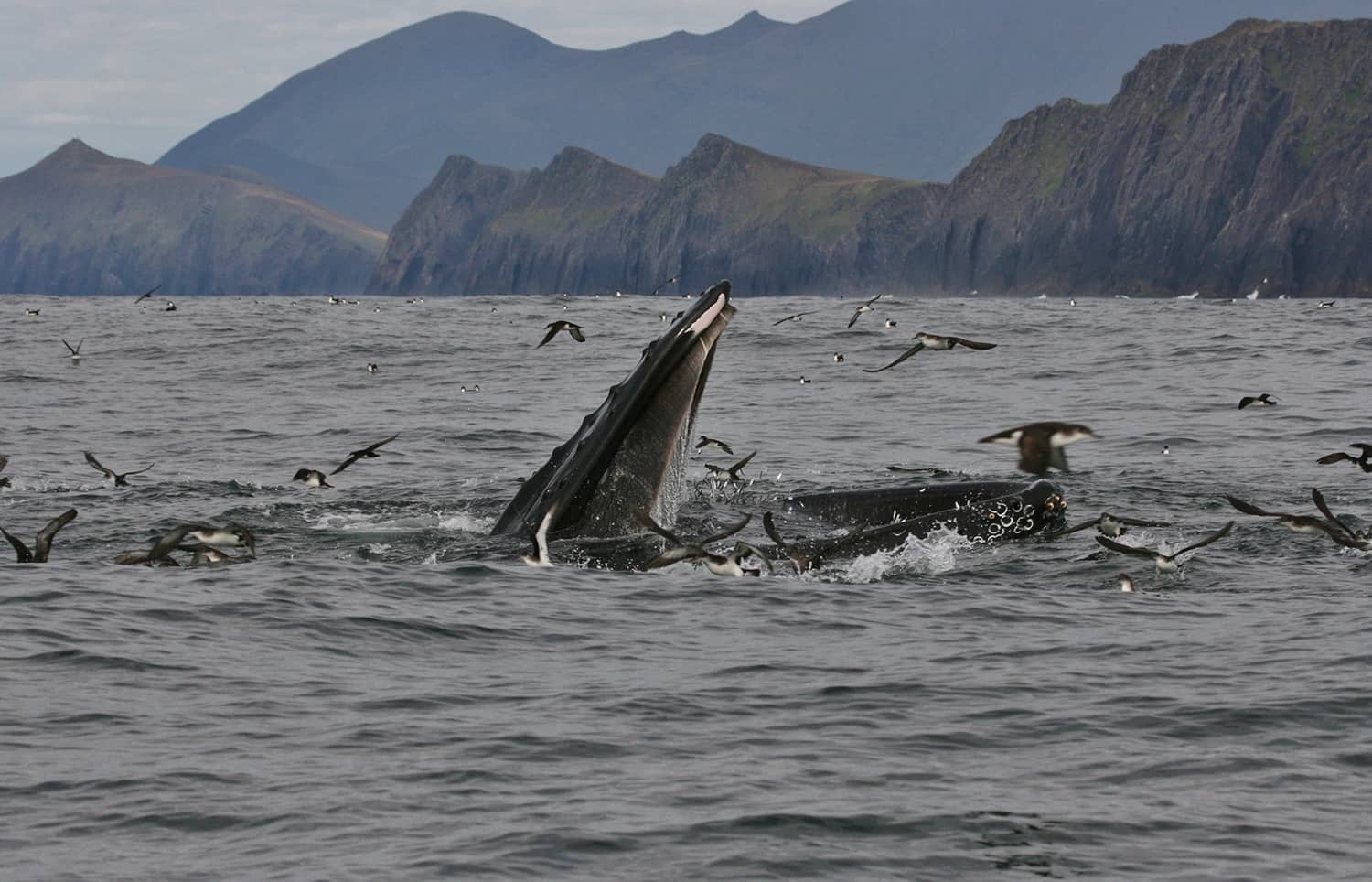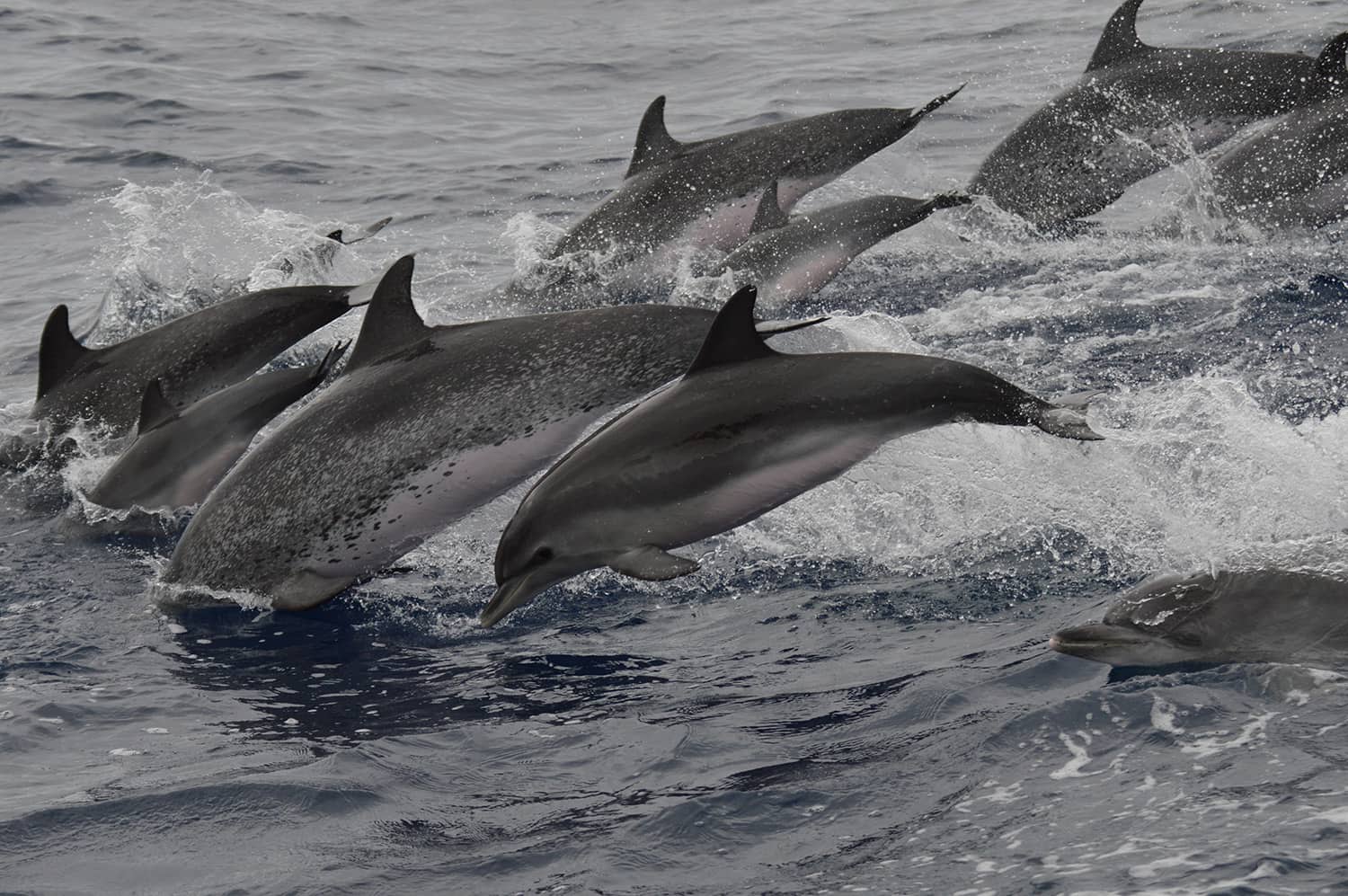
27th February 2024
This month, 33 new Important Marine Mammal Areas (IMMAs) have been approved and put on the map in the North East Atlantic Ocean and Baltic Sea. This announcement represents the final result from a full-year process, including an intensive week-long scientific workshop last May assessing data on candidate IMMAs which were then submitted for peer review. At the same time, a number of candidate IMMAs from previous regional IMMA workshops have been re-assessed in recent months, leading to 6 areas reaching full IMMA status.
As a result, a total of 39 new IMMAs have been added to the IMMA e-Atlas and are now available for download as shapefiles with associated information.
To date, 74.3% of the world ocean has been examined for IMMAs, with IMMAs comprising 13% of the examined area. IMMAs are divided into 57% within exclusive economic zones (EEZs) and 43% in international waters on the high seas. Globally, there are now 280 IMMAs and 185 Areas of Interest (AoI).

IMMAs are defined as discrete portions of habitat, important to marine mammal species, that have the potential to be delineated and managed for conservation. They are not legal designations but independent, peer-reviewed assessments based on criteria supported by data.
Western European countries have at their disposal a broad suite of spatial conservation measures, not only national efforts to make marine protected areas (MPAs), but EU Habitats Directive Special Areas of Conservation, OSPAR agreement MPAs, International Maritime Organisation (IMO) designations and routing, and marine spatial planning both through the EU Marine Strategy Framework Directive and efforts at the national and local level.
“IMMAs may seem redundant in European and North East Atlantic waters where marine mammals are nominally protected by international, regional and national legal tools,” says Erich Hoyt, co-chair of the IUCN Marine Mammal Protected Areas Task Force. “But, in fact, IMMAs provide a check to see if marine mammal habitats are included under existing measures. At the same time, IMMAs are turning up substantial new areas which are needed for protection.”
Hoyt and other marine scientists are calling on governments to take action to utilise the IMMA tool in marine spatial planning, the creation of marine protected areas, and for performing environmental impact assessments.

The North East Atlantic Ocean and Baltic Sea (NEATLO) Region covers nearly a quarter of the Atlantic Ocean. Species-rich, the region supplies habitat for feeding and migrating humpback whales (Megaptera novaeangliae), blue whales (Balaenoptera musculus) and fin whales (Balaenoptera physalus). There is deep water habitat for Cuvier’s (Ziphius cavirostris) and other cryptic beaked whale (Mesoplodon) species in the Canary Islands, Azores and Bay of Biscay. Besides the prevalent common minke whales (Balaenoptera acutorostrata), harbour porpoises (Phocoena phocoena), common dolphins (Delphinus delphis), Risso’s dolphins (Grampus griseus), common bottlenose dolphins (Tursiops truncatus), and harbour seals; there are species endemic to the region such as the critically endangered and decreasing Baltic Sea harbour porpoises and the endangered Saimaa ringed seals (Pusa hispida saimensis) and Ladoga ringed seals (Pusa hispida ladogensis). There are several populations of killer whales (Orcinus orca) including the critically endangered Strait of Gibraltar subpopulation with only 39 individuals subsisting on bluefin tuna and lately disabling or breaking the rudders off small boats traversing the region.

“We are turning the corner in terms of government, industry and academic recognition of the value of IMMAs,” says Task Force co-chair Giuseppe Notarbartolo di Sciara. “As we get closer to completing the global picture, IMMAs are securing a place for whales and other marine mammals at the negotiating table for conservation measures. It is urgent that we take notice.”
The week-long IMMA workshop, held in Hamburg, Germany, in May 2023, was supported by a grant from the Water Revolution Foundation and organised and run by the IMMA Secretariat of the IUCN Task Force on Marine Mammal Protected Areas. The 53 workshop participants from 13 countries comprised the region’s top marine mammal scientists. They started by considering 395 preliminary Areas of Interest (pAoI). The pAoI selected to advance to candidate IMMAs were defended with text supporting various criteria based on scientific evidence and detailed mapping along with a strong rationale for the boundaries chosen. After an extensive process by an independent review panel, the mapping of these areas is now complete.
To download the North East Atlantic Ocean IMMA report, go to https://www.marinemammalhabitat.org/resources/documents/
To obtain shapefiles and detailed background information for the 33 approved IMMAs, go to https://www.marinemammalhabitat.org/immas/imma-spatial-layer-download/
For more information, story leads, contacts and free use of photos and maps, email Task Force co-chair: Erich Hoyt, erich.hoyt@imma-network.org
 ©Chandra Salgado Kent
©Chandra Salgado Kent ©Elena Gladilina
©Elena Gladilina